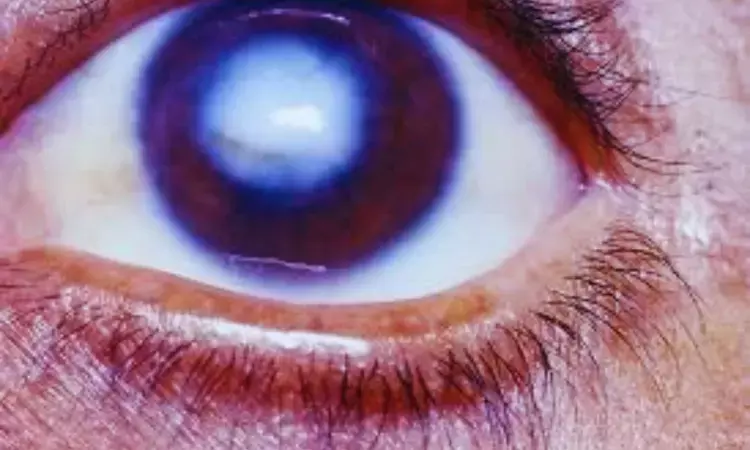- Home
- Medical news & Guidelines
- Anesthesiology
- Cardiology and CTVS
- Critical Care
- Dentistry
- Dermatology
- Diabetes and Endocrinology
- ENT
- Gastroenterology
- Medicine
- Nephrology
- Neurology
- Obstretics-Gynaecology
- Oncology
- Ophthalmology
- Orthopaedics
- Pediatrics-Neonatology
- Psychiatry
- Pulmonology
- Radiology
- Surgery
- Urology
- Laboratory Medicine
- Diet
- Nursing
- Paramedical
- Physiotherapy
- Health news
- Fact Check
- Bone Health Fact Check
- Brain Health Fact Check
- Cancer Related Fact Check
- Child Care Fact Check
- Dental and oral health fact check
- Diabetes and metabolic health fact check
- Diet and Nutrition Fact Check
- Eye and ENT Care Fact Check
- Fitness fact check
- Gut health fact check
- Heart health fact check
- Kidney health fact check
- Medical education fact check
- Men's health fact check
- Respiratory fact check
- Skin and hair care fact check
- Vaccine and Immunization fact check
- Women's health fact check
- AYUSH
- State News
- Andaman and Nicobar Islands
- Andhra Pradesh
- Arunachal Pradesh
- Assam
- Bihar
- Chandigarh
- Chattisgarh
- Dadra and Nagar Haveli
- Daman and Diu
- Delhi
- Goa
- Gujarat
- Haryana
- Himachal Pradesh
- Jammu & Kashmir
- Jharkhand
- Karnataka
- Kerala
- Ladakh
- Lakshadweep
- Madhya Pradesh
- Maharashtra
- Manipur
- Meghalaya
- Mizoram
- Nagaland
- Odisha
- Puducherry
- Punjab
- Rajasthan
- Sikkim
- Tamil Nadu
- Telangana
- Tripura
- Uttar Pradesh
- Uttrakhand
- West Bengal
- Medical Education
- Industry
University of Houston optometry researcher provides new hope for injured corneas

Consider the cornea: the eye's transparent, dome-shaped surface that provides most of its focusing power and serves as a protective barrier. It directs light onto the retina for sharp vision and shields the eye from dust, debris and harmful UV rays. That’s a lot to ask from a structure made of cells and proteins that’s about two-thirds the size of a dime, yet it does its job brilliantly.
Until it is damaged. Then vision can blur, distort-or be lost entirely. And the cornea is definitely prone to damage.
“When the cornea gets injured, it often heals with scar tissue and abnormal blood vessels, both of which can cause permanent vision loss,” said Tarsis G. Ferreira, assistant professor at the UH College of Optometry. “Unfortunately, there are few treatments for this, and in severe cases, patients need a corneal transplant.”
That dilemma led Ferreira to begin developing a treatment for corneal scarring. He is supported in his work with a five-year grant for $2.2 million from the National Institutes of Health. The treatment focuses on a natural protein in the cornea, named decorin, which plays an essential role in keeping the cornea clear and healthy. It does this by blocking another protein called TGF-β1 (transforming growth factor beta 1), which triggers the scarring process after injury.
“Our goal is to engineer a better version of decorin that more strongly blocks TGF-β1 and another protein receptor that promotes blood vessel growth (VEGFR2), to prevent both scarring and unwanted blood vessels from forming,” said Ferreira.
Natural decorin does that, but the protein is hard to produce. Ferreira has built a version of decorin, which he named mini-dec, that binds better to the two targets and is easy to produce and deliver as eyedrops.
“We hope this new therapy could soon be used to treat eye injuries and surgeries, helping people heal without losing vision,” said Ferreira. The decorin-based drugs will be simple to use and have the potential for treating corneal injuries in the clinic.”
Dr Kamal Kant Kohli-MBBS, DTCD- a chest specialist with more than 30 years of practice and a flair for writing clinical articles, Dr Kamal Kant Kohli joined Medical Dialogues as a Chief Editor of Medical News. Besides writing articles, as an editor, he proofreads and verifies all the medical content published on Medical Dialogues including those coming from journals, studies,medical conferences,guidelines etc. Email: drkohli@medicaldialogues.in. Contact no. 011-43720751


